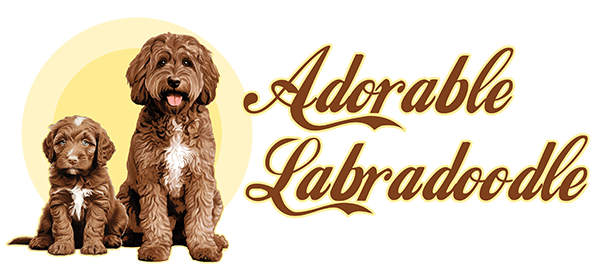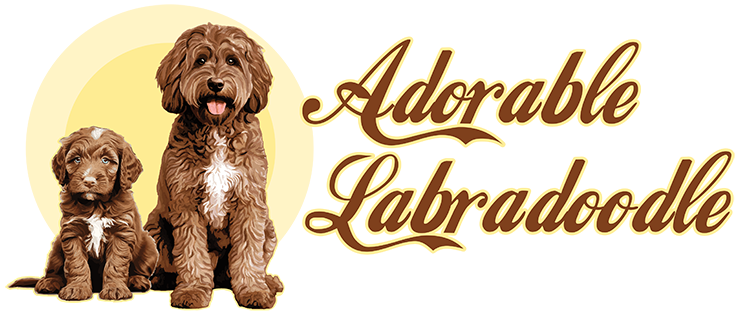When searching for the perfect Labradoodle, most people focus on appearance, temperament, or whether the dog is hypoallergenic. But one of the most important — and often overlooked — factors is the Labradoodle’s bloodline. Understanding your Labradoodle’s genetic background can make a significant difference in their health, behavior, and overall quality of life. In this guide, we’ll explore why Labradoodle bloodlines matter, what to look for, and how responsible breeding affects the dog you bring home.
What Are Labradoodle Bloodlines?
Labradoodle bloodlines refer to a dog’s ancestry and the genetics inherited from previous generations. The Labradoodle is a hybrid breed — a cross between a Labrador Retriever and a Poodle — but not all Labradoodles are created equal. The quality of the breeding lines used plays a key role in determining a dog’s health, coat type, temperament, and size.
Understanding your dog’s genetic lineage helps ensure you’re not just getting a “cute designer dog,” but a companion that’s healthy, well-balanced, and suited to your family’s needs.
The Different Generations of Labradoodle Bloodlines
Not all Labradoodles come from the same generation, and knowing the difference is crucial when evaluating their bloodlines.
F1 Labradoodle (First Generation)
An F1 Labradoodle is a direct cross between a purebred Labrador and a purebred Poodle. While this generation often benefits from hybrid vigor, their traits — such as coat texture or shedding level — can vary significantly. Their lineage is less predictable.
F1B Labradoodle
This is a backcross between an F1 Labradoodle and a Poodle. F1B dogs are 75% Poodle and 25% Labrador, which usually results in curlier, more hypoallergenic coats. These breeding lines are more refined and often preferred by allergy-sensitive families.
Multigenerational Labradoodle (Multigen)
A Multigen Labradoodle comes from several generations of Labradoodles bred together. These dogs often have the most consistent bloodlines, with predictable traits in terms of size, coat type, and temperament. Reputable breeders use multigenerational lines to strengthen desirable traits and reduce health issues.
Health and Genetic Integrity: Why Bloodlines Matter
One of the strongest arguments for carefully selected Labradoodle bloodlines is health. Dogs with well-documented and carefully maintained ancestry are less likely to suffer from hereditary diseases.
Responsible breeders perform genetic testing to screen for:
- Hip and elbow dysplasia
- Progressive retinal atrophy (PRA)
- Allergies and skin conditions
- Epilepsy
- Degenerative myelopathy
When a dog comes from a proven bloodline, it greatly reduces the risk of unexpected health problems. Reputable breeders will be transparent about the health testing they perform on their breeding dogs and will provide documentation.
Temperament and Behavior: Genetics Play a Role
While environment and training certainly influence behavior, genetics are a foundational element of any dog’s personality. Dogs from strong Labradoodle bloodlines tend to have more consistent, balanced temperaments. This is because ethical breeders select parent dogs not only for health and appearance but also for calm, intelligent, and affectionate personalities.
Labradoodles with reliable lineage are:
- Eager to please
- Quick learners
- Friendly with people and animals
- Well-suited for therapy or assistance work
If you’re hoping for a family-friendly dog that integrates easily into your home, choosing a Labradoodle with solid breeding lines is key.
Coat Type and Appearance: Not Just About Looks
Many people choose Labradoodles for their low-shedding or hypoallergenic coats. However, not every Labradoodle has these traits — especially first-generation dogs. Coat quality depends heavily on genetic background.
Multigenerational Labradoodles, which come from refined bloodlines, are more likely to have:
- Soft, curly or wavy coats
- Low to non-shedding fur
- Less dander (better for allergy sufferers)
- Predictable grooming needs
If coat type and allergy-friendliness are priorities, ask the breeder about the dog’s genetic lineage, and whether previous generations had similar coat characteristics.
Choosing a Labradoodle with Quality Bloodlines
So how can you be sure you’re choosing a Labradoodle with reputable bloodlines?
Ask the Breeder:
- Do you provide a pedigree or detailed family history?
- What generation is the Labradoodle (F1, F1B, Multigen)?
- Have both parents been health tested and cleared?
- Are you a member of a reputable breeder association (such as ALAA — Australian Labradoodle Association of America)?
Look for Signs of Responsible Breeding:
- Transparent breeding practices
- Clean, well-maintained facilities
- Willingness to answer questions
- Focus on health and temperament, not just looks
Buying from a backyard breeder or pet store increases the risk of getting a dog with unknown or poor bloodlines, which can lead to long-term issues.
Final Thoughts: Bloodlines Make All the Difference
When it comes to bringing a Labradoodle into your home, don’t underestimate the importance of bloodlines. A dog’s genetic heritage affects everything from health and temperament to appearance and lifespan. Reputable breeders work hard to preserve and refine Labradoodle breeding lines — and that effort pays off in the dogs they produce.
Whether you’re looking for a loyal family dog, a hypoallergenic companion, or a potential service animal, choosing a Labradoodle with proven bloodlines gives you the best chance of finding the perfect match.
Invest time in research, ask the right questions, and partner with a responsible breeder. Your future furry friend will thank you.



